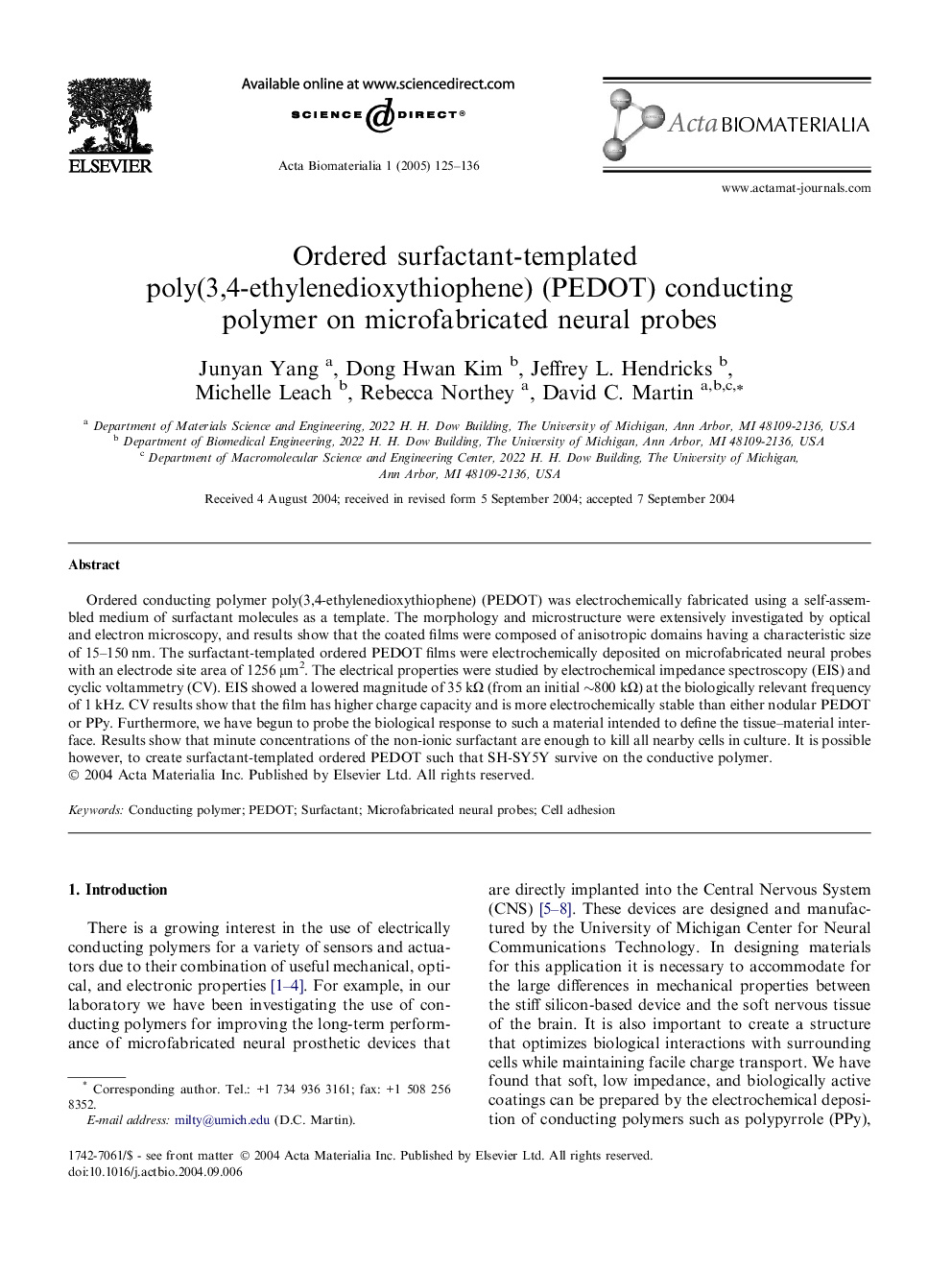| Article ID | Journal | Published Year | Pages | File Type |
|---|---|---|---|---|
| 10160445 | Acta Biomaterialia | 2005 | 12 Pages |
Abstract
Ordered conducting polymer poly(3,4-ethylenedioxythiophene) (PEDOT) was electrochemically fabricated using a self-assembled medium of surfactant molecules as a template. The morphology and microstructure were extensively investigated by optical and electron microscopy, and results show that the coated films were composed of anisotropic domains having a characteristic size of 15-150 nm. The surfactant-templated ordered PEDOT films were electrochemically deposited on microfabricated neural probes with an electrode site area of 1256 μm2. The electrical properties were studied by electrochemical impedance spectroscopy (EIS) and cyclic voltammetry (CV). EIS showed a lowered magnitude of 35 kΩ (from an initial â¼800 kΩ) at the biologically relevant frequency of 1 kHz. CV results show that the film has higher charge capacity and is more electrochemically stable than either nodular PEDOT or PPy. Furthermore, we have begun to probe the biological response to such a material intended to define the tissue-material interface. Results show that minute concentrations of the non-ionic surfactant are enough to kill all nearby cells in culture. It is possible however, to create surfactant-templated ordered PEDOT such that SH-SY5Y survive on the conductive polymer.
Related Topics
Physical Sciences and Engineering
Chemical Engineering
Bioengineering
Authors
Junyan Yang, Dong Hwan Kim, Jeffrey L. Hendricks, Michelle Leach, Rebecca Northey, David C. Martin,
